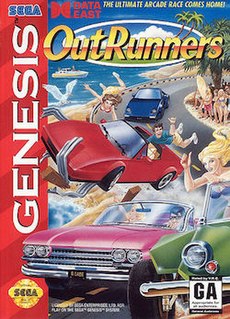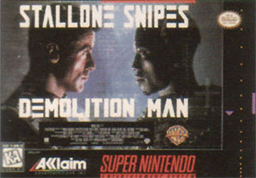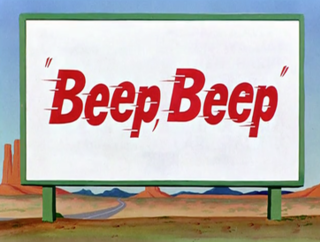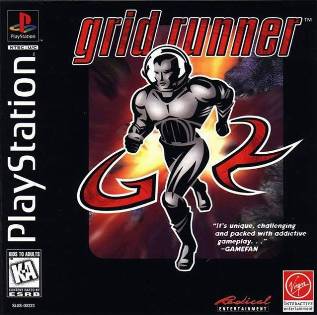
The ACME Corporation is a name for the fictional corporation appearing in various Warner Bros. cartoon shorts, where it was used as a running gag due to their wide array of products that are dangerous, unreliable or preposterous.

Wile E. Coyote and the Road Runner are a duo of cartoon characters from the Looney Tunes series of animated cartoons, first appearing in 1949 in the theatrical cartoon short Fast and Furry-ous. In each episode, the cunning, devious and constantly hungry coyote repeatedly attempts to catch and subsequently eat the Road Runner, but is successful in catching the Road Runner on only extremely rare occasions. Instead of his animal instincts, the coyote uses absurdly complex contraptions to try to catch his prey, which comically backfire, with the coyote often getting injured in slapstick fashion. Many of the items for these contrivances are mail-ordered from a variety of companies implied to be part of the Acme Corporation.
Hopalong Casualty is a 1960 Warner Bros. Looney Tunes theatrical animated short, directed by Chuck Jones. The short was released on October 8, 1960, and stars Wile E. Coyote and the Road Runner. The title is a play on the Hopalong Cassidy western series of books written by author Clarence E. Mulford.

OutRunners (アウトランナーズ) is a racing video game developed by Sega and AM1 and released in Japan, Europe, and North America in 1993. It constitutes the third release in the arcade OutRun series and was ported to the Mega Drive in 1994.

Fast and Furry-ous is a 1949 Warner Bros. Looney Tunes cartoon, directed by Chuck Jones and written by Michael Maltese. The short was released on September 17, 1949, and stars Wile E. Coyote and the Road Runner, in their debut.
Beep Prepared is a 1961 Warner Brothers Merrie Melodies American theatrical cartoon short directed by Chuck Jones and designer Maurice Noble. The short was released on November 11, 1961, and stars Wile E. Coyote and the Road Runner. The title is a play on the Boy Scouts of America motto "Be Prepared".

To Beep or Not to Beep is a Merrie Melodies animated short starring Wile E. Coyote and the Road Runner. Released December 28, 1963, the cartoon was written by Chuck Jones and John Dunn, and directed by Jones. This is the penultimate Road Runner/Coyote short that Chuck Jones directed at Warner Bros. during the original "classic" era. This is also the final Warner Bros. cartoon released in 1963.

Demolition Man is a pair of action video games based on the film of the same name. Acclaim Entertainment published the 16-bit version, which features run and gun gameplay, for the Super NES, Sega Genesis and Sega CD. Virgin Interactive released a completely different game for the 3DO that combined several distinct gameplay styles. In both games, the player controls John Spartan, the main character from the film, as he attempts to find and defeat his nemesis, Simon Phoenix.

Road Runner's Death Valley Rally is a 1992 video game developed by ICOM Simulations and published by Sunsoft for the Super Nintendo Entertainment System. It is based on the Looney Tunes characters Wile E. Coyote and the Road Runner.
Chariots of Fur is a seven-minute Looney Tunes short released in 1994 by Warner Bros. It features Wile E. Coyote and the Road Runner and was directed by Chuck Jones, who introduced the pair in 1949. As in other shorts of the Road Runner series, Wile E. tries to catch his potential prey through the use of various devices. This film's soundtrack uses music from the Bedřich Smetana opera The Bartered Bride. It was released in North American theaters preceding the film, Richie Rich. It was the first time a new short of Wile E. Coyote and Road Runner had been released theatrically since 1966. This was the final Coyote/Road Runner short to be directed by Jones before his death on February 22, 2002. The title is a parody of Chariots of Fire.

Beep, Beep is a 1952 Warner Bros. Merrie Melodies series directed by Chuck Jones. The short was released on May 24, 1952, and stars Wile E. Coyote and the Road Runner. The cartoon is named after the sound the Road Runner makes, which is often misheard as "Meep, meep".

Zipping Along is a 1953 Warner Bros. Merrie Melodies cartoon directed by Chuck Jones. The short was released on September 19, 1953, and stars Wile E. Coyote and the Road Runner.

Stop! Look! And Hasten! is a 1954 Warner Bros. Merrie Melodies cartoon, directed by Chuck Jones. The short was released on August 14, 1954, and stars Wile E. Coyote and the Road Runner. The title is a play on the railroad crossing safety phrase "stop, look, and listen". The cartoon has been featured in the film The Shining. Danny Torrance and his mother, Wendy Torrance, are seen watching this cartoon.

Guided Muscle is a 1955 Warner Bros. Looney Tunes cartoon directed by Chuck Jones. The short was released on December 10, 1955, and stars Wile E. Coyote and the Road Runner.
Hip Hip-Hurry! is a 1958 Warner Bros. Merrie Melodies cartoon directed by Chuck Jones. The short was released on December 6, 1958, and stars Wile E. Coyote and the Road Runner. The title is a pun on the phrase "Hip Hip Hooray!!"

Hare-Breadth Hurry is a 1963 Warner Bros. Looney Tunes cartoon directed by Chuck Jones and Maurice Noble. The short was released on June 8, 1963, and stars Bugs Bunny and Wile E. Coyote. This is the fifth and final pairing of Bugs and the Coyote, and unlike the previous four outings, this cartoon follows the Wile E. Coyote and the Road Runner formula. As such, Wile E. Coyote is silent, although Bugs does speak in the short, often to the audience. Hare-Breadth Hurry is also one of the few cartoons where Bugs does not eat a carrot, although Wile E. does use carrots as bait.

Grid Runner is an action game developed by Radical Entertainment and published by Virgin Interactive Entertainment for the Sega Saturn, PlayStation, and Microsoft Windows in 1996. It is frequently described as a cross between tag and capture the flag, but the playing field is a maze-like grid which the players can manipulate to an extent. Players can either compete against each other in one-on-one matches or take on a series of AI opponents in the game's story mode. Grid Runner was first announced under the title "Eurit".
Sugar and Spies is a 1966 Warner Bros. Looney Tunes cartoon. The short was released on November 5, 1966, and stars Wile E. Coyote and the Road Runner. It is the second of two Road Runner shorts directed by Robert McKimson and the only one to feature music by Walter Greene. It is also the final appearance of the Road Runner and Wile E. Coyote during the Golden age of American animation.
War and Pieces is a 1964 Warner Bros. Looney Tunes theatrical animated short directed by Chuck Jones. The short was released on June 6, 1964, and stars Wile E. Coyote and the Road Runner. It was the last Looney Tunes/Merrie Melodies cartoon directed by Chuck Jones until 1979's Freeze Frame.
Rushing Roulette is a 1965 Warner Bros. Merrie Melodies cartoon directed by Robert McKimson. The short was released on July 31, 1965, and stars Wile E. Coyote and the Road Runner. It was the second Road Runner cartoon directed by someone other than Chuck Jones, who had almost exclusively used the characters since their debut in 1949. McKimson directed one other Road Runner cartoon the following year, Sugar and Spies.













